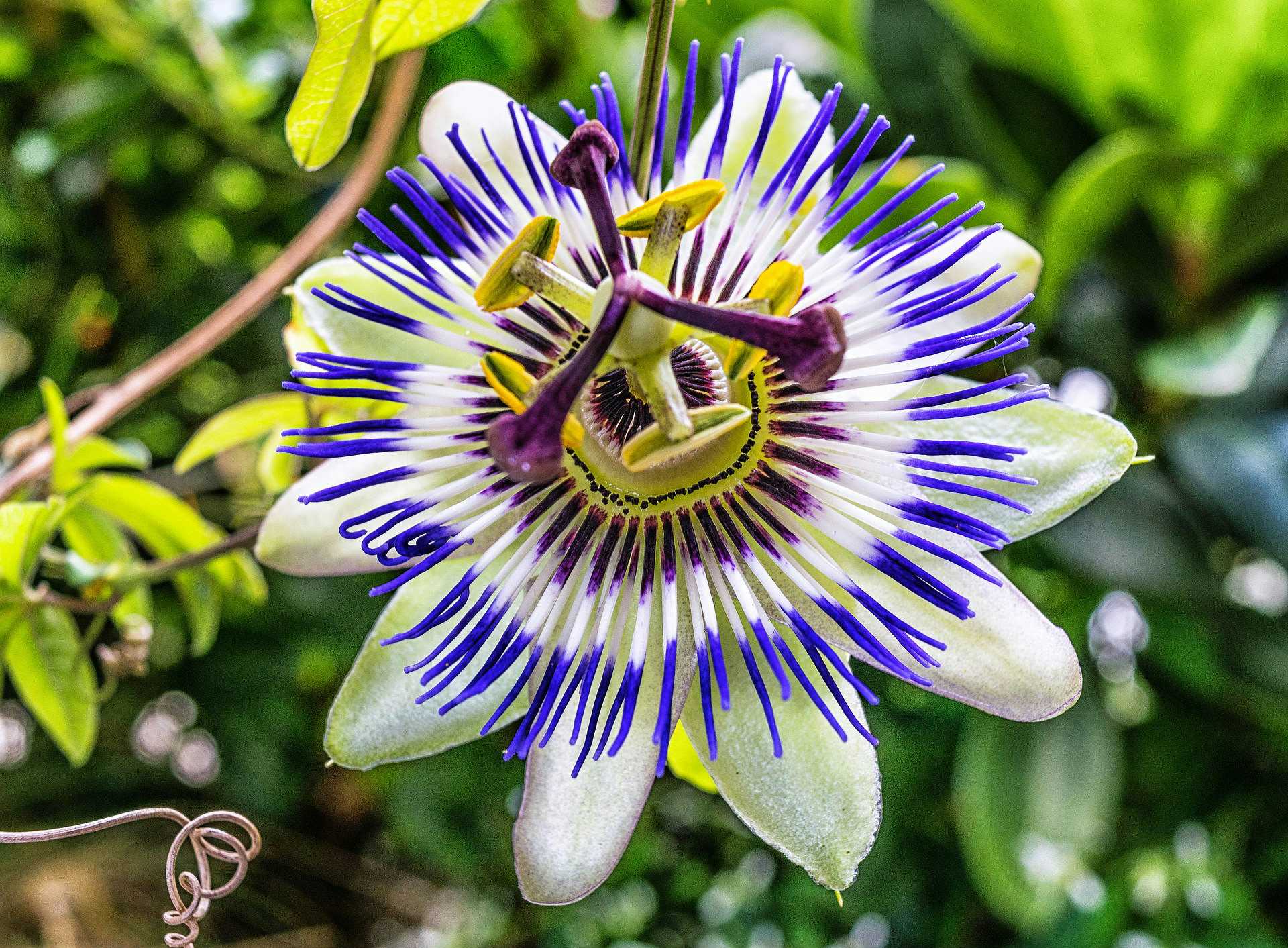
Several species of Passiflora are native to the Americas, but the one generally used as a botanical is P. incarnata.
This perennial vine grows wild in the southeastern United States as far north as Virginia and as far west as southeast Kansas. It is sometimes called maypop or apricot vine because of its edible fruits.
The flower reminded Spanish explorers of the Passion of Christ: the three styles represented the three nails, the corona was thought to resemble the crown of thorns, and the ten petals stand for the ten true apostles (Peter and Judas are excluded).
Because of these flamboyant flowers, passionflower is often cultivated in home gardens. P. incarnata should not be confused, however, with the ornamental blue passionflower, P. coerula, which contains toxic compounds.
All of the aboveground parts of P. incarnata are used medicinally.
Active Ingredients
There is some controversy over the exact composition of P. incarnata. Approximately 2.5 percent appears to be flavonoids such as vitexin, orientin, homo-orientin, saponarin, schaftoside, and a few others as glucosides, together with free flavonoids including apigenin, luteolin, quercetin, and kaempferol.
In Europe, passionflower is required to contain not less than 0.8 percent total flavonoids, calculated as vitexin.
The harman alkaloids that have been identified by some chemists are disputed by others. Umbelliferone, scopoletin, and maltol have been reported.
An antifungal, antimicrobial compound dubbed passicol is found in fresh plant matter but dissipates quickly from the dried herb or aqueous extract.
Uses
Passionflower preparations have been used in homeopathic medicines, especially in Europe, to treat insomnia, nervous exhaustion, and pain. The herbal medicine is used for similar problems.
Very little clinical research has been conducted on passionflower, but animal research suggests the herb may affect the nervous system in several ways.
At some doses, the plant may have stimulant properties, but the primary effect seems to be sedative. At high doses (10 mg extract per 10 g body weight in the mouse), passionflower extract can counteract stimulation from methamphetamine.
It may be necessary to utilize the extract for the expected effect: various components have quite different activities. The controversial harman alkaloids are said to be stimulating, but they also relax spasm in smooth muscle, dilate coronary arteries, and lower blood pressure.
Maltol, on the other hand, slowed mice down, relaxed their muscles, and slowed their respiration and heart rate.
Despite the dearth of clinical research, in Europe the herb is used for tension, restlessness, and irritability with mild insomnia. It has also been used for “functional” digestive problems and restlessness in children.
Passionflower is one of the most popular herbal sedatives in the United Kingdom, included as an ingredient in a large number of proprietary herbal mixtures.
Combinations of passionflower, valerian root, and lemon balm are approved in Germany to treat difficulty falling asleep due to nervousness and also nervous unrest.
Perhaps one of the most delightful descriptions of the use of passionflower came from traditional North Carolina herbalist Tommie Bass: “They say it brings people together. After you have lived with someone for many years the little things they do start to bother you. So you take some passionflower leaves and make you a tea. Pretty soon you start to relax and the little things don’t bother you so much and you get along just fine.”
Given the great popularity of passionflower in Europe and its increasing popularity in the United States, clinical trials to determine its effectiveness would be welcomed.
Dose
Usually 4 to 8 g herb per day, in divided doses, or 1 to 4 ml of tincture.
The infusion is made by pouring 2/3 cup boiling water over 1 teaspoon (2 g) of herb, steeping between five and ten minutes, and straining it. Two or three cups are drunk in a day, with one before bedtime.
Passionflower may be taken for as long as it is helpful.
Special Precautions
Pregnant women should not use this herb without medical supervision.
Passionflower might affect a person’s concentration and alertness. Driving or operating complex machinery after taking the herb is not advised.
Adverse Effects
Rare allergic reactions of asthma and runny nose have been reported.
Possible Interactions
No interactions have been reported in the literature, but prudence suggests that passionflower should not be mixed with prescription sedatives such as benzodiazepines (Ativan, Xanax, etc.) or barbiturates, or with other sedative herbs such as kava or valerian.

